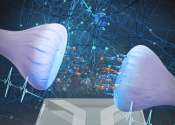The dynamics of 'hotspot forming' high-energy quasiparticles in a superconducting nanowire
Energetic quasiparticles possess a collection of quantum characteristics that operate in a particle-like way in superconducting nanostructures, and they can undergo relaxation by involving many cascaded interactions between ...









